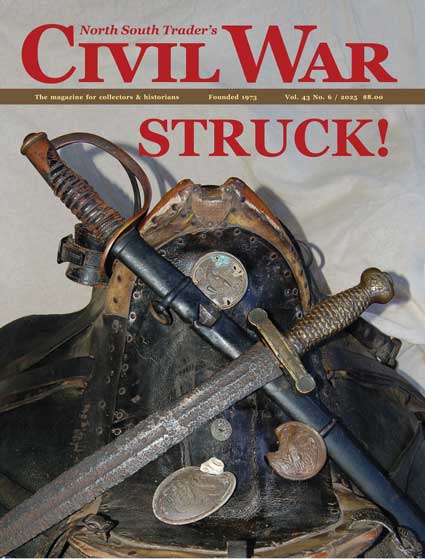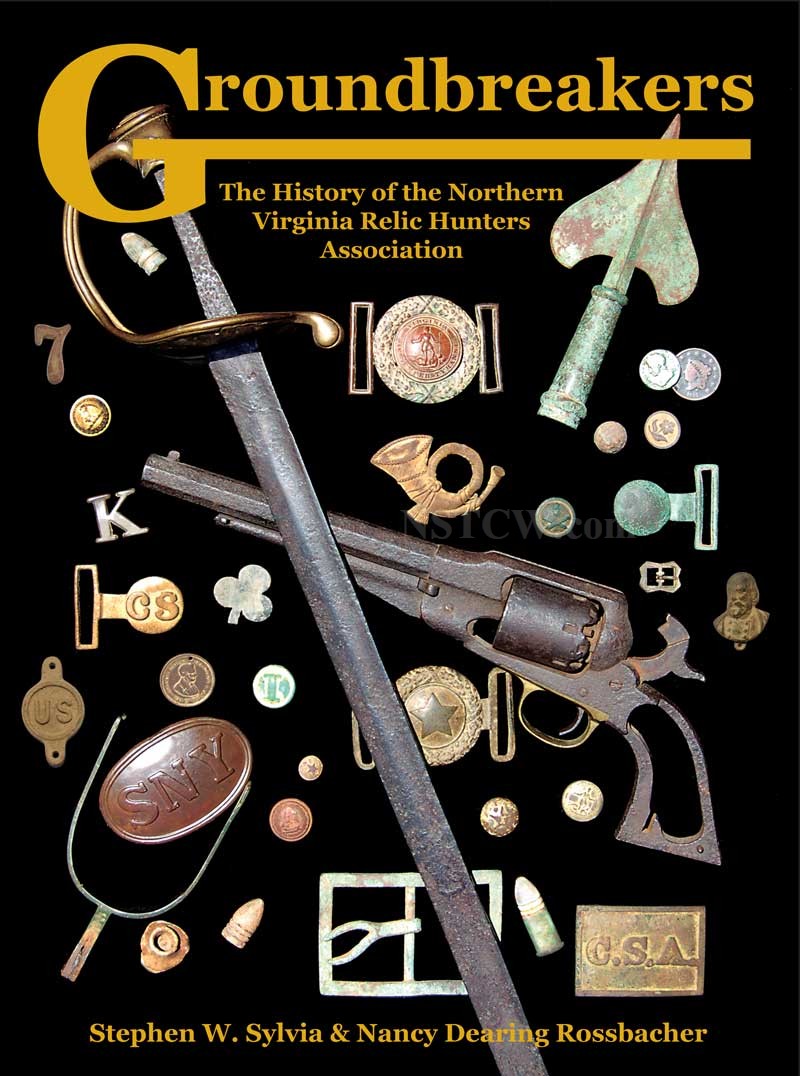|
Publisher's Forum Issue: 35-6 |
|
Vol. 35 No. 6: Accuracy, attention to detail & truth
When I was a boy my brother Dennis was already an accomplished art student. I remember asking him to paint a Civil War painting for me. Actually, I asked him more than once. I was, I'm quite sure, a monstrous pest about it. He finally explained that he didn't know enough about the details of the arms and equipment to comfortably reproduce them on a canvas. Studying other paintings or photos of artifacts didn't do the trick, he told me. He said he needed to handle the guns and equipment in order to accurately paint them. At the time I thought he was brushing me off, reluctant to waste his time on a subject he wasn't interested in just to appease his annoying little brother. He did eventually paint an Impressionistic rendering of a battle scene for me that didn't require specific details, and it was quite good—it depicted desperate movement and terror amid clouds of swirling gunsmoke. Years later, when I first began to write about the Civil War, I realized I couldn't express certain aspects of a 19th century soldier's experience because I lacked the details. Sure, I'd read countless descriptions in books, but that's a far cry from experiencing it for oneself. I didn't really know what a Civil War battle sounded like. I didn't know what it smelled like. I had little understanding of the confusion that reigns when your vision is obscured by eye-stinging smoke, when commands cannot be heard because of screams and explosions, when your own voice is drowned out by the racket. I had no idea what it took to load and fire a musket, why equipment was placed in particular fashion on the torso, what was unbearable on a march, or that a full canteen can slap your hip just so many times before a painful bruise develops. It became very clear what my brother had tried to make me understand years before. You can't make up the details. I realized that I could only learn this minutia through first-hand experience. Lacking a time machine, I decided to participate in a reenactment. My friend and relic hunting buddy, Mike O'Donnell, and I assembled rudimentary Confederate uniforms augmented by original arms and equipment. We traveled to Gettysburg that July and marched onto the field as the Rebel forces were assembling for battle. Before we'd even completed the march to the staging area, I already grasped why soldiers tucked their flapping pants cuffs into their socks. I understood why canteen slings were always tied in a knot and why the haversack and canteen straps were rigged beneath the accoutrement belt. Some gear drags your uniform down by its weight, and some will snag on everything you pass by unless you secure them properly. Far more detail awaited me. By the close of the battle I knew the salty taste of black powder, and I'll never forget what it smells like. I understood why expressions like "Rally ‘round the flag" had been created. (Black powder smoke hangs low like fog, but you can see a flag above it.) I realized why bugle calls were instituted—an excellent communication device in the din of battle. I also learned about the kick of a musket and how much pain a single shot can inflict if the rifle butt isn't firmly locked against your shoulder. There were a few injuries. A Yankee cavalry officer was thrown from his horse and broke an arm, Mike accidently butt-stroked an aggressive Federal infantryman, and I couldn't raise my right arm without wincing in agony. But it was a great learning experience. I vowed to do it again—many times. I eventually went on the field as a cavalryman and an artilleryman to further my knowledge of details. When the Civil War print mania exploded in the early 1990s, I found it easy to see which artists knew the details they were painting. When I examined a work by a then little-known artist named Don Troiani, I saw immediately that he was intimately acquainted with the details of his subject. I was not surprised when I later learned that he is an experienced Civil War collector. Later, once I'd gotten to know Don, I saw him on the field in a Federal officer's uniform at the 125th reenactment of the Battle of First Manassas. Artist Keith Rocco proved also to be an advanced collector, not only of Civil War artifacts but also 19th century British and World War I and II militaria. Some artists, anxious to benefit from the Civil War print mania, revealed their unfamiliarity through an embarrassing lack of correct detail in their paintings. Some oversights and misinterpretations were obvious, such as incorrect flags or weaponry for the time or theatre of war shown. Others required closer examination to see the flaws, but the evidence was there nonetheless. Some were subtle, such as the weight of a piece of gear that was not reflected in the proper drag on the cloth or a piece of equipment lacking an essential component-—a finial, a scabbard mount, or barrel bands. I recall one print that showed a cavalryman and his mount dramatically leaping over a breastwork. The saddle lacked a cinch strap necessary to secure the saddle to the horse's back. It was obvious that it hadn't even occurred to the artist that such weight couldn't simply rest upon the horse's back. To some people, such detail is unimportant—the expressions "artistic license" and "literary license" can be employed to cover breaches of accuracy or flawed research. But to many of us, detail is crucial. As the expression goes, "God is in the details." In my opinion it is attention to detail that offers proof of truth-seeking in the work of an author, artist, filmmaker, teacher, or politician. Truth is, after all, what it is all about. --- Pub. |
| Past Publisher's Forums click an issue number to view |
| 43-6 |
| 43-5 |
| 43-4 |
| 43-3 |
| 43-2 |
| 42-3 |
| 42-3 |
| 42-3 |
| 42-3 |
| 42-3 |
| 41-6 |
| 41-5 |
| 41-1 |
| 40-5 |
| 40-4 |
| 40-3 |
| 40-1 |
| 39-6 |
| 39-5 |
| 39-4 |
| 39-3 |
| 39-2 |
| 39-1 |
| 38-3 |
| 38-2 |
| 38-1 |
| 37-6 |
| 37-5 |
| 37-4 |
| 37-3 |
| 37-2 |
| 37-1 |
| 36-9 |
| 36-6 |
| 36-5 |
| 36-4 |
| 36-3 |
| 36-2 |
| 36-1 |
| 35-5 |
| 35-4 |
| 35-3 |
| 35-2 |
| 35-1 |

